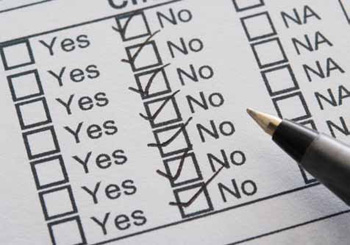Top 10 Predictions for 2011 (with proof!)

By Ellen Ullman
Forget auld acquaintances and don’t worry about resolutions, the most popular thing to do this time of year is to make predictions for the next 12 months. See below for our list, along with some backup from people who put the proof in our pudding. Throughout the year, we’ll track their progress and grade our conjecture this time next year.
Textbooks are dead! For real this time!
“We are at approximately 80 percent electronic books right now,” says Paul Wood, technology director at Bishop Dunne Catholic School in Dallas. The three-year process has spurred a major network upgrade, allowing students to bring their own connectivity, and has educated parents. “While there are many pros and cons of being that immersed in ebooks, I truly believe that the cons will continue to disappear and the pros will only become greater,” Wood says. “Features such as text-to-speech, highlighting, marking in the books, and others continue to be things that will get better not only with the books but also with the technology.”
Assessment will be comprehensive and constant!
“Learning happens all the time. If there are clear standards and student progress is based on competency, then learning anywhere should count,” says Kim Carter, executive director of the QED Foundation, a nonprofit dedicated to creating and sustaining student-centered learning communities. They’ve been doing this for the last nine years at the Monadnock Community Connections Public High School of Choice in Swanzey, New Hampshire. Each student works collaboratively with a teacher advisor to establish her or his education plan. For example, one student learned all his geometry standards through origami. Another worked with a glass geometrician who creates stained-glass lamps.

1:1 becomes BYOT!
With today’s children all but glued to their iPhones, is it any wonder that schools are beginning to let the kids bring in their own tech? That’s what’s happening in Walled Lake (MI ) Consolidated School District. “We’re seeing an increasing number of students using their own laptops, netbooks, cell phones, iPods, and FlipCams,” says Pamela Shoemaker, instructional and assistive technology coordinator. “Walled Lake is working on setting digital norms and updating our acceptable use policy so that these types of devices are allowed and encouraged in school, as long as they’re being used for educational purposes.”
Facebook will be encouraged!
“Kids often ask if they can ‘friend’ us,” says Cathy Swan, technology integration teacher at New Canaan (CT) High School. “They use it to ask classmates for help, to share event photos, and to poll their friends, so why not ask teachers to use it with them?”
Educators throughout her high school have come up with several ways to use Facebook. Swan suggests starting by asking students to create a Facebook page for a historical figure (instead of writing a report). “This format makes them consider the historical figure differently: Who would she ‘friend’? What would you read on his wall? What would her photo albums look like? Which Facebook groups would he join or sponsor? What events would she plan?”
Tools and ideas to transform education. Sign up below.
Students will surf away (kind of)!
“At my school we have shifted the focus from removing our filter to making the resources available that our teachers need while still being CIPA compliant,” says Sarah Rolle, director of technology at the Elisabeth Morrow School in Englewood, New Jersey. “Our focus is on communicating with teachers and understanding their needs.”
Rolle, a former teacher, knows that when her teachers ask for something to be unblocked, it’s because it’s valuable. She believes that filters should not get in the way of educating students but knows she can’t ignore the law if she wants to receive E-Rate funding. Her teachers know whom to contact to unblock the filter, and she thinks it is essential in every school system to know who can unblock sites. If that information is not available, teachers must take the initiative to find out.

The end of testing is nigh!
“I think we can get to a place of understanding the role of tests a whole lot better,” says Chris Lehmann, principal of the Science Leadership Academy (SLA ), a four-year-old Philadelphia magnet school developed in partnership with The Franklin Institute. “Tests are really about the ability to regurgitate what someone else told them. The point isn’t to just know the information but to use the information to create, figure out, learn, or make something. Any of those is far more important than just spewing out facts.”
Learning at his school is authentic, powerful, and meaningful, Lehmann says. To get there, educators have to ask different questions, such as, What if high school weren’t just prep? What if the work kids did in high school mattered now? What could they create?

Students forced to use phones in class!
T&L advisors and educators Lisa Nielsen and Willyn Webb know how schools can harness the power of cell phones. Their progressive five-step plan starts with helping educators use cell phones for professional purposes, moves to using the devices to strengthen the home-school connection, and ends with empowering students to use the devices for learning outside of school and, ultimately, in the classroom. “As we move into the next decade and schools go from banning to embracing cell phones for learning,” Nielsen says, “failure to bring your phone might become grounds for detention—much like failure to bring your textbook or homework was in the past.”
Content will be free for all, all the time!
Scott S. Floyd, instructional technologist at White Oak (TX) Independent School District, is a free radical (so to speak): “If the government provides free education to all, why would we not make the best content available and within easy reach?” he asks. “Instead we spend billions every year on paper copies from companies that package the same thing in a new wrapper.”
At White Oak he encourages staff to work within global communities to find content and teaching and learning strategies that benefit them and their students. This goal is attainable, within limits. Time is the most limiting factor. Absent an easy search engine for good content, the staff does have to spend hours vetting the content to find what is a good match for their needs. Sounds like an opportunity for publishers…
Students will learn outside of school!
“This year our students will have two full days of instruction delivered electronically,” says Lisa Wendel, superintendent of the Mississinawa Valley (OH) Local School District. “These two days will take place when we are unable to go to school because of unsafe weather conditions. Each teacher has already developed electronic lessons for each of their classes. When an e-day is called, students will go to the district Web site and click on their grade or teachers’ names, and the lessons will be enabled for them. The goal for the project is to equal or surpass the learning that would occur in a normal face-to-face day.”
All data become compatible—globally!
One hundred and sixty leading education organizations around the world are collaborating through a nonprofit organization called the IMS Global Learning Consortium to develop and conform to a framework called the Digital Learning Services Standards. So far, 30 products have been certified to conform to the new standards, which make interaction among Blackboard, Moodle, Desire2Learn, and other learning tools and platforms seamless. The standards are receiving initial support from the Florida Virtual School and the New York City Department of Education, among others.
